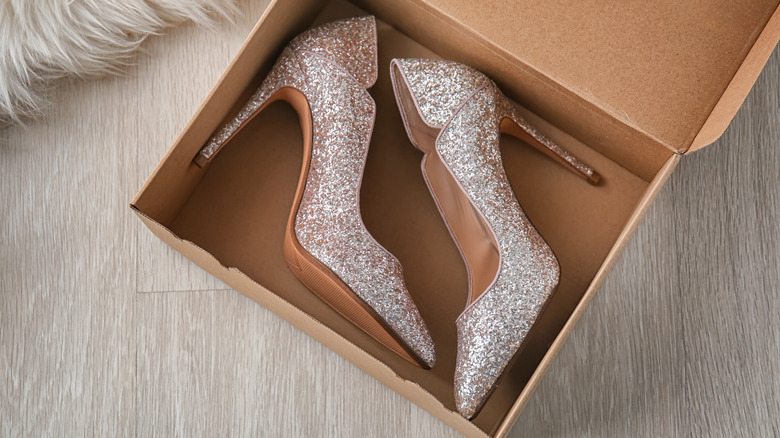Who Invented The High Heel?
From the 1700s through today, heels were targeted to women. But for most of history, people of all genders wore heels, and there are a surprising number of practical uses for them. Heels have gone through so many reinventions, and are still worn today. So who first invented these shoes, and why?
As early as 3500 B.C., men and women were wearing high heels. Usually, royalty wore shoes, while civilians went barefoot (via Study). Some jobs made wearing tall shoes practical. Butchers, for example, wore high heels so they could step over animal carcasses.
Then in Turkey in the middle ages, both men and women enjoyed wearing high heels called pattens. Chopines were worn by women as everyday footwear during the 1400s (via Study). The streets could be pretty gross during these times, and heels helped avoid stepping in trash or waste while taking a stroll.
Meanwhile, in other parts of the world, high heels were being created for different uses. As Malone Souliers reports, Persian cavalrymen took great pride in being accomplished military equestrians. With a high heel they could lock their feet safely into the horse's stirrups, minimizing their risk of falling off. Men's heels were a status symbol, too — a man who wore heels probably owned a horse, and therefore had money (plus the disposable income to buy heels, of course).
Transformation of high heels
It wasn't until around the 1500s that heel trends began to grow in popularity, specifically for women. Chopines began to grow to crazy heights, with some reports stating that women wore up to 30-inch heels to avoid stepping in filth on the streets (via Malone Souliers).
Meanwhile, in France, King Louis XIV (above) was such a big fan of heels that he wore them for at least 40 years of his life. As Study reports, in the 1600s, his favorite shoes were four-inch red heels that made him look taller, and signified his wealth and royal status. He reportedly had many pairs custom-made with velvet or satin, and dyed red or blue — check out most paintings of him, where he often posed with his favorite type of shoe. King Louis XIV famously insisted that anyone who wanted to speak with him in his courtroom must wear heels before they entered (via Love Happens).
It's impossible to know the first inventor of the high heel, because throughout history, all over the world, people were simultaneously inventing tall shoes for a variety of reasons both practical and fashionable. Heels will continue to evolve and change — who knows what humans will be using heels for in the future?

